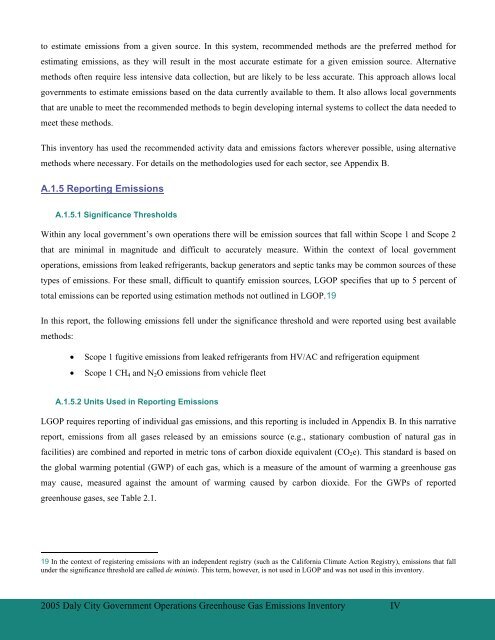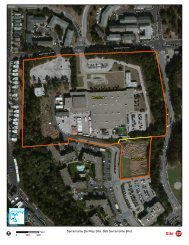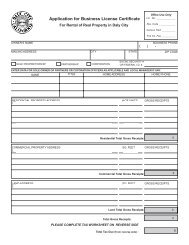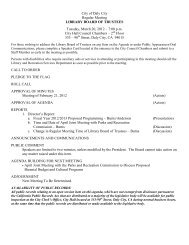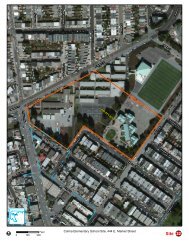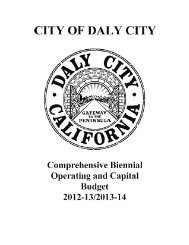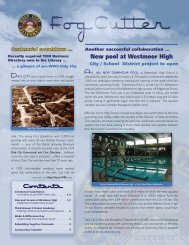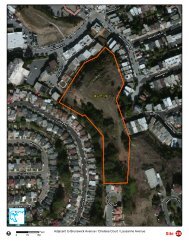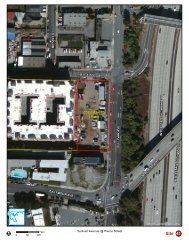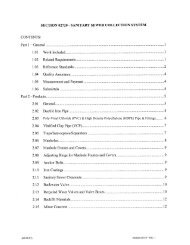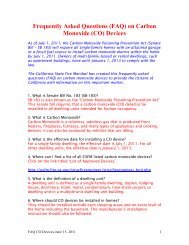Daly City's Green Vision - City of Daly City
Daly City's Green Vision - City of Daly City
Daly City's Green Vision - City of Daly City
Create successful ePaper yourself
Turn your PDF publications into a flip-book with our unique Google optimized e-Paper software.
to estimate emissions from a given source. In this system, recommended methods are the preferred method for<br />
estimating emissions, as they will result in the most accurate estimate for a given emission source. Alternative<br />
methods <strong>of</strong>ten require less intensive data collection, but are likely to be less accurate. This approach allows local<br />
governments to estimate emissions based on the data currently available to them. It also allows local governments<br />
that are unable to meet the recommended methods to begin developing internal systems to collect the data needed to<br />
meet these methods.<br />
This inventory has used the recommended activity data and emissions factors wherever possible, using alternative<br />
methods where necessary. For details on the methodologies used for each sector, see Appendix B.<br />
A.1.5 Reporting Emissions<br />
A.1.5.1 Significance Thresholds<br />
Within any local government’s own operations there will be emission sources that fall within Scope 1 and Scope 2<br />
that are minimal in magnitude and difficult to accurately measure. Within the context <strong>of</strong> local government<br />
operations, emissions from leaked refrigerants, backup generators and septic tanks may be common sources <strong>of</strong> these<br />
types <strong>of</strong> emissions. For these small, difficult to quantify emission sources, LGOP specifies that up to 5 percent <strong>of</strong><br />
total emissions can be reported using estimation methods not outlined in LGOP.19<br />
In this report, the following emissions fell under the significance threshold and were reported using best available<br />
methods:<br />
<br />
<br />
Scope 1 fugitive emissions from leaked refrigerants from HV/AC and refrigeration equipment<br />
Scope 1 CH 4 and N 2 O emissions from vehicle fleet<br />
A.1.5.2 Units Used in Reporting Emissions<br />
LGOP requires reporting <strong>of</strong> individual gas emissions, and this reporting is included in Appendix B. In this narrative<br />
report, emissions from all gases released by an emissions source (e.g., stationary combustion <strong>of</strong> natural gas in<br />
facilities) are combined and reported in metric tons <strong>of</strong> carbon dioxide equivalent (CO 2 e). This standard is based on<br />
the global warming potential (GWP) <strong>of</strong> each gas, which is a measure <strong>of</strong> the amount <strong>of</strong> warming a greenhouse gas<br />
may cause, measured against the amount <strong>of</strong> warming caused by carbon dioxide. For the GWPs <strong>of</strong> reported<br />
greenhouse gases, see Table 2.1.<br />
19 In the context <strong>of</strong> registering emissions with an independent registry (such as the California Climate Action Registry), emissions that fall<br />
under the significance threshold are called de minimis. This term, however, is not used in LGOP and was not used in this inventory.<br />
2005 <strong>Daly</strong> <strong>City</strong> Government Operations <strong>Green</strong>house Gas Emissions Inventory IV


